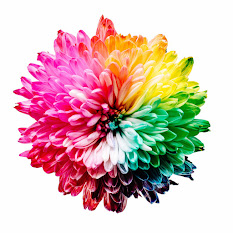Humans have an undeniable attraction, and even reverence for, flowers that is unlike our appreciation for other objects in our natural world. Throughout our history, people have been inspired by flowers to write poetry and songs, give them symbolic power, philosophize about their purpose in the world, add them to our folklore, paint and draw them endlessly and so much more. The famous German philosopher, Goethe, claimed that he could look at a flower and experience our whole cycle of existence. Leaves or grass or sand have never garnered such adoration. What is it about flowers that moves us so?
| Roses of the Wars of the Roses |
 |
| Hanami Festival - Kyoto, Japan |
The Japanese have tuned the simple act of admiring flowers into a cultural phenomenon. Known as Hanami (flower viewing) the tradition of gathering to contemplate flowers dates back to at least the Nara period of their history (710-794 AD). Over the centuries, this practice has become focused on the undeniably gorgeous cherry blossoms of spring. These flowers are so important to the Japanese that, in 1909, the mayor of Tokyo gifted Washington D.C. cherry trees as a token of friendship between the two countries. This gift is appreciated every year by the throngs of people who come to D.C. to see the glorious blooms.
“The rose is the flower and handmaiden of love – the lily, her fair associate, is the emblem of beauty and purity.” – Dorothea Dix
 |
| The Flower Power picture - October 21, 1967 |
 |
| Coelogyne mayeriana orchid |
People love to ascribe meanings to the different colors of flowers. For instance, we send red roses to show passion or deep love, while pink is more playful. But some people say that colors also can influence emotional health. In this theory, flower colors don’t just symbolize a message, they directly affect the person who is in the vicinity of them. Orange flowers bring optimism and sociability while blue ones invoke serenity. On a side note: Green is the most common color in the natural world, but green flowers are very rare (one exception is this beautiful orchid). I wonder what the philosophers make of that?
“In joy and in sadness, flowers are our constant friends.” – Unknown
Over the years scientists around the world have researched the effects of flowers on people and these studies show what we all know instinctively – no matter the type or color, flowers make us feel good. In Tokyo, they learned that people experience physiologically measurable benefits within four minutes of looking at roses. In the Netherlands, they found that diners with flowers on their tables were in better moods. Read more here. |
| Magnolia blossom |










I love flowers!
ReplyDelete